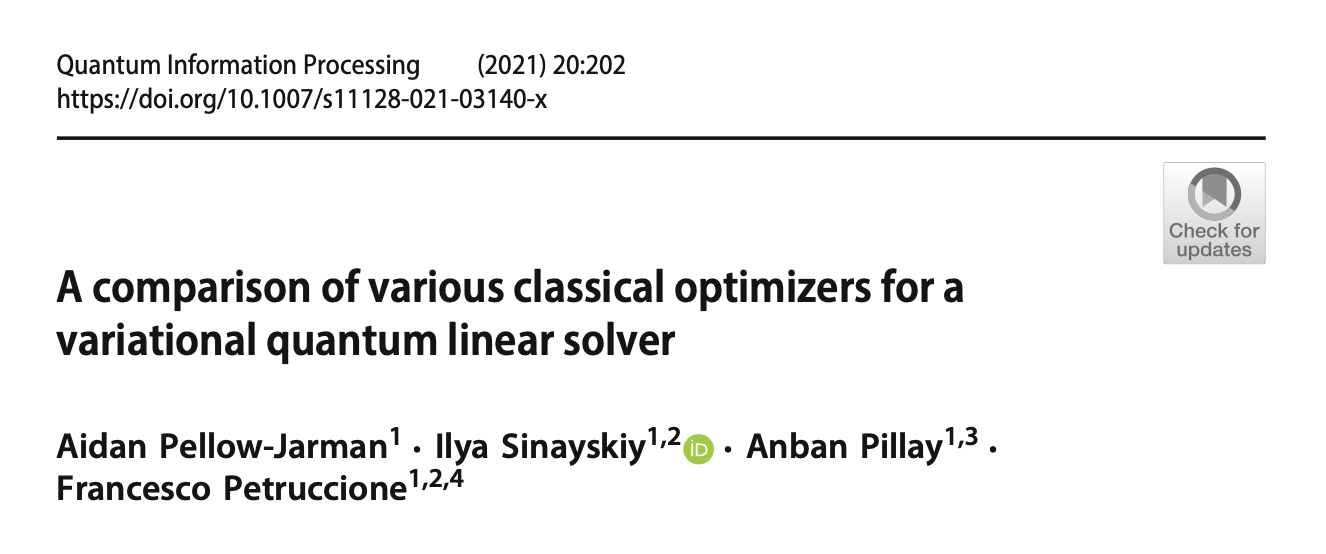Category: Papers
-

A comparison of various classical optimizers for a variational quantum linear solver
A historic paper: the first collaboration with Computer Science at UKZN. Thank you Anban Pillay, Aidan Pellow-Jarman, and Ilya Sinayskiy. Abstract: Variational hybrid quantum-classical algorithms are a class of quantum […]
